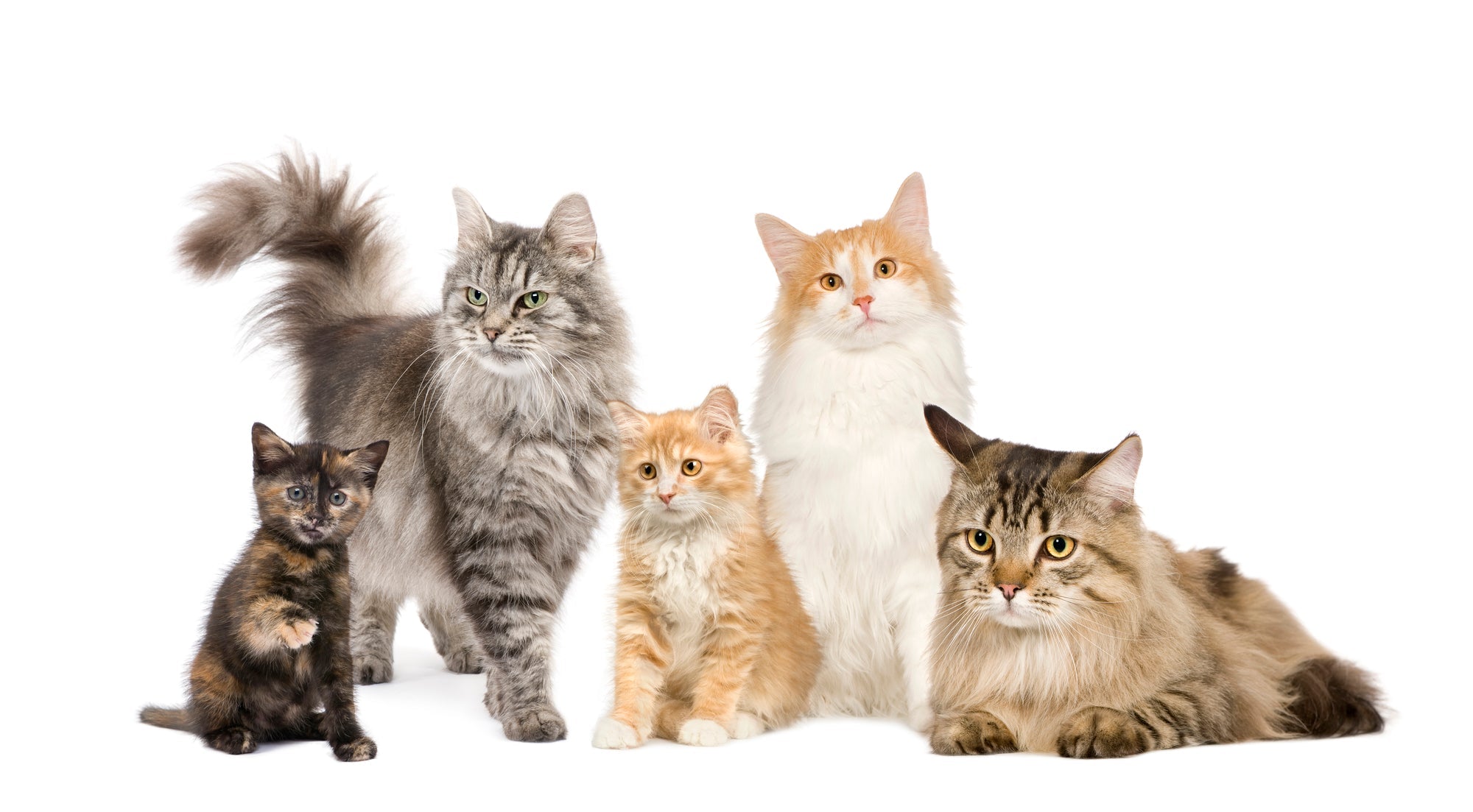As responsible pet parents, we naturally want our cats to have the longest, happiest life possible. And some of that will be influenced by how much they weigh and how much we feed them.
As every cat is different, it’s hard to give concrete advice on how many calories a cat needs or what their ideal weight should be.
It can depend on many things, like their age, health, breed, size, activity level and whether they have been spayed or neutered.
And though there are many factors that go into working out a cat’s ideal weight, there are clear signs a cat isn’t eating enough or is eating too much.
If you want to give your furry family member the best life, getting their food and weight right is essential.
Normal cat weight by age
According to Cats Protection, over 3 million UK cats are overweight. That’s not a situation anyone wants to be in.
Overweight cats have higher chances of health problems, will enjoy life less and can end up leaving us earlier than we’d like. All good reasons to monitor their weight.
However, cats come in all shapes and sizes, and a normal weight for a small British shorthair would not necessarily be normal for a larger Tom or Bengal.
According to Myfamilyvets.co.uk, the average cat should weigh between 4 and 4.5kg.
However, because cats come in all shapes and sizes, most vets don’t recommend using weight as a measure of health. They much prefer to use body composition instead.
That’s why you’ll often see charts on the wall at the vets showing skinny cats, average cats and overweight cats and what they look like.
We would suggest going less by weight and more by looks, as your vet does.
This Cat Size-O-Meter is an excellent tool for checking your cat’s body shape to make sure they are remaining within the healthiest range.
If you’re ever unsure about your cat’s weight, ask your vet. They have the training and expertise to give you a much more reliable weight reading than anyone else!
If your cat is overweight
If you notice a rounder belly, more swaying when they walk or larger legs than they used to have, your cat could be overweight.
If you think your feline friend is putting on the pounds, perhaps it’s time to help them lose it.
Try to do it subtly and not draw attention to their expanding belly though – we don’t want to dent their confidence!
To help a cat lose weight, reduce their meal sizes slightly while increasing their level of exercise.
You’ll only need to do it by a few grams per day. And, over time, that calorie deficit should help them lose the extra weight and get into the normal range once again.
You can also switch to healthier treats and play with your cat more too. Both help nurture your relationship while letting you have some fun!
If you’re out during the day, use an automatic pet feeder to deliver portioned food at their usual mealtimes.
One cat being overweight could be because they’re raiding someone else’s dinner. A microchip feeder can put an end to that.
If you have one cat that likes to steal their sibling’s dinner, you can use our MiBowl Automatic Microchip Pet Feeder, which only allows the cat with a paired microchip to use it.
And remember, don’t rush. Reduce calories by increments and give it time to work.
Don’t be tempted to try to go too fast when reducing the amount of food, as you could force your cat to look elsewhere for food and we don’t want that!
If your cat is underweight
If you think your cat is underweight, you can increase their caloric intake a little so they gain weight.
If they are seriously underweight, rapidly losing weight or don’t gain weight even when you increase their food, have them checked over by your vet.
We wouldn’t want anything else to be affecting them while you’re trying to help them put on some pounds!
If all is well, you can increase their calorie intake gradually over time. Don’t rush, as you could go too far the other way. Just increase their food in increments and monitor their condition as you go.
Also try your best to avoid over-treating them, as most treats typically have little nutritional value. Feed them good food so they remain healthy.
If you’re out during the day, you can keep your feline friend’s mealtime schedule on track using an automatic feeder. Use the timer function to feed them at their usual time, portion their food carefully and let them eat.
That should cure that problem!
The average weight of a cat
As you’ve seen, it’s much less about weight and more about body composition.
As cats are all shapes, sizes and ages, and have different activity levels that can also play a part, monitoring their shape can be vastly more effective.
Remember, a healthy cat is a happy cat. We want our companions to live a long and fruitful life, and keeping them healthy is a key part of that.
If life gets in the way of mealtimes, there are simple solutions. Cat feeders and microchip cat feeders are the answer to this particular problem.
They can also help with meal raiding too, which is an added bonus!

